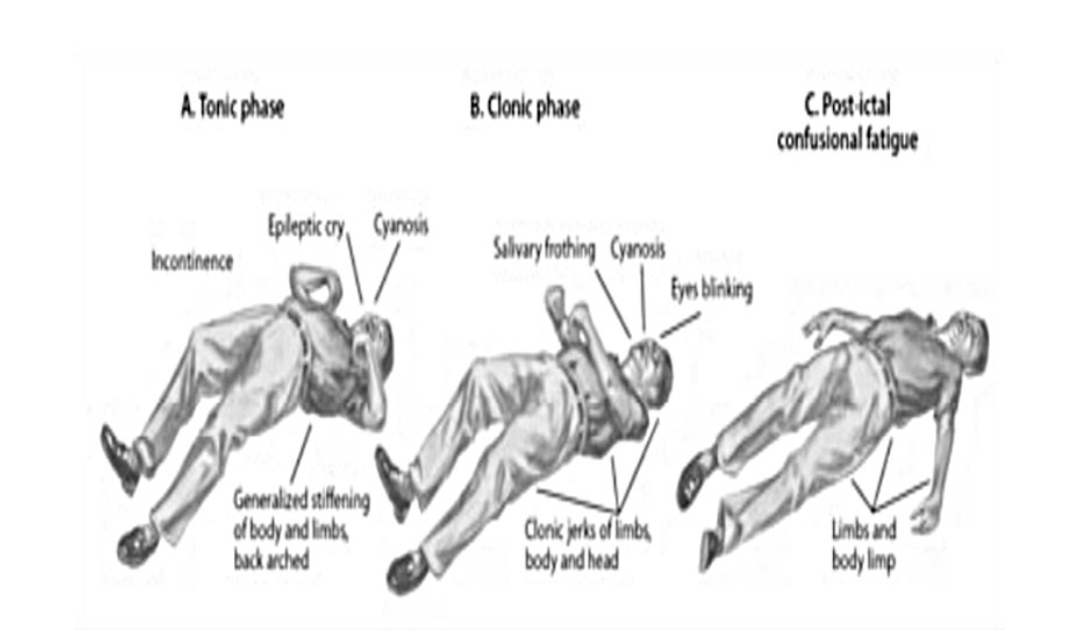OSCE on seizures
cal Seizures:
- Complex Focal Seizures: Consciousness is altered, and the person may exhibit repetitive behaviors or confusion.
Generalized Onset Seizures: These seizures involve both hemispheres of the brain and can be divided into various subtypes:
- Absence Seizures: Brief lapses of consciousness with minimal movements. Common in children.
- Tonic Seizures: Muscles stiffen, often causing falls.
- Clonic Seizures: Repetitive, jerking muscle movements.
- Tonic-Clonic Seizures: Muscles stiffen, followed by rhythmic jerking. Formerly known as grand mal seizures.
- Atonic Seizures: Loss of muscle tone, leading to sudden falls.
- Myoclonic Seizures: Brief, rapid muscle jerks.
Unknown Onset Seizures: In some cases, the exact origin of the seizure is unclear due to limited information.
Epileptic Spasms: Characterized by clusters of sudden bending or flexing movements.
Non-Epileptic Seizures: Also called psychogenic non-epileptic seizures, these are episodes that resemble seizures but are not caused by abnormal brain activity.
Drugs used in epilepsy
Phenytoin : Used for various seizure types, it stabilizes the neuronal membranes and prevents repetitive firing of neurons.
Carbamazepine : Effective against focal and generalized seizures, it works by reducing abnormal electrical activity in the brain.
Valproic Acid : Used for different seizure types, it can also treat mood disorders. It increases levels of a neurotransmitter that dampens nerve activity.
Lamotrigine : Effective for focal and generalized seizures
Lamotrigine : Effective for focal and generalized seizures, it helps control abnormal electrical activity.
Levetiracetam : Used for focal and generalized seizures, it's thought to modulate neurotransmitter release.
Topiramate : Effective against focal and generalized seizures, it works by enhancing the activity of GABA, a neurotransmitter that reduces neuronal excitability.
Oxcarbazepine : Similar to carbamazepine, it's used for focal seizures and helps reduce abnormal brain activity.


